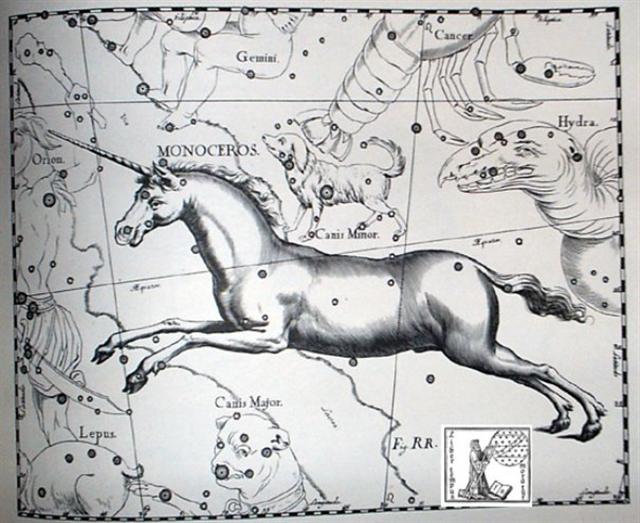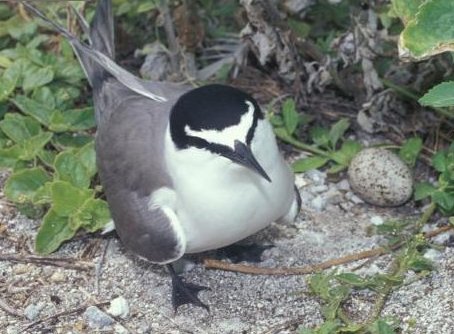The midnight culmination of Atlas would at all times
occur 136 days before its heliacal rising (together with
Alcyone and Pleione), and at all times this was in the night
after the 8th Chinese station connected with the South Dipper
and with a hint in form of a Unicorn - Unique Horn, Manu Tara,
Corner uniting Lacie and Tillie.

|
1 |
Horn |
α
Virginis (Spica) |
Crocodile |
(202.7) |
Oct
9 (282) |
282
= 265
+ 17 |
|
2 |
Neck |
κ
Virginis |
Dragon |
(214.8) |
Oct
21 (294) |
294
= 282
+ 12 |
|
3 |
Root |
α
Librae (Zuben Elgenubi) |
Badger |
(224.2) |
Oct
31 (304) |
304
= 295
+ 9 |
|
4 |
Room |
π
Scorpii (Vrischika) |
Hare |
(241.3) |
Nov
17 (321) |
321
= 304
+ 17 |
|
5 |
Heart |
σ
Scorpii |
Fox |
(247.0) |
Nov
23 (327) |
327
= 321
+ 6 |
|
6 |
Tail |
μ
Scorpii (Denebakrab) |
Tiger |
(254.7) |
Nov
30 (334) |
334
= 327
+ 9 |
|
7 |
Winnowing Basket |
γ
Sagittarii (Nash) |
Leopard |
(273.7) |
Dec
19 (353) |
353
= 334
+ 19 |
|
December solstice |
|
8 |
South Dipper |
φ
Sagittarii (?) |
Unicorn |
(284.0) |
Dec
30 (364) |
364
= 353
+ 11 |

... Several of the early missionaries
comment with a fine sense of humor upon the mistake the
islanders made in calling the cow when first seen a
bird. This is the word which led the good missionaries
into the error of their own ignorance.
Manu is as
wholesale in its signification as our word animal, it is
generic. In the paucity of brute mammalia the first
missionaries found this general term most frequently
used of birds, and it was their and not a Polynesian
mistake to translate manu into bird. In the
material here collected it will be seen that the
significations animal and bird are widely extended. In
the Paumotu insects are included; the same is
true of Mota, where manu signifies beetle
as well as bird. Nor is its applicability restricted to
earth and air; it reaches into the sea as well. Samoa
uses i'amanu (fish-animal) for the whale ...
|
OCTOBER
26 |
27 (300) |
28 |
29 |
30 |
31
(*224) |
|
*OCTOBER
22 |
23
(*216) |
24 |
25 |
26 |
27 (300) |
 |
 |
 |
 |
 |
 |
|
Ga8-16 |
Ga8-17
(220) |
Ga8-18 |
Ga8-19 |
Ga8-20 |
Ga8-21 |
|
ζ
Pavonis (283.4), λ Cor. Austr. (283.6),
DOUBLE
DOUBLE
= ε
Lyrae (283.7), ζ Lyrae (283.8) |
South
Dipper-8
(Unicorn)
Φ
SAGITTARII
(284.0), μ Cor. Austr. (284.6), η Cor. Austr., θ
Pavonis (284.8) |
SHELIAK
= β Lyrae, ν Lyrae (285.1), ο Draconis (285.5). λ
Pavonis (285.7)
ATLAS (27
Tauri)
|
χ Oct.
(286.0),
AIN AL RAMI (Eye of the Archer)
= ν Sagittarii (286.2), υ Draconis (286.4), δ Lyrae
(286.3), κ Pavonis (286.5),
ALYA
(Serpent)
= θ
Serpentis (286.6) |
ξ
Sagittarii (287.1), ω Pavonis (287.3), ε Aquilae, ε
Cor. Austr.,
SULAPHAT
= γ Lyrae (287.4), λ Lyrae (287.7),
ASCELLA
= ζ Sagittarii,
BERED
= i Aquilae (Ant.) (287.9) |
Al
Na'ām-18 /
Uttara Ashadha-21
NUNKI = σ Sagittarii
(288.4), ζ Cor. Austr. (288.5),
MANUBRIUM
= ο Sagittarii (288.8), ζ Aquilae (288.9) |
|
December
29 |
30
(*284) |
31 |
January
1 |
2 |
3 (368) |
 |
 |
 |
 |
 |
 |
|
Ca10-28 |
Ca10-29 |
Ca11-1
(285) |
Ca11-2 |
Ca11-3 |
Ca11-4 |
| te
inoino |
te
tagata |
E
inoino |
te
inoino |
kua
haga |
tupu te raau i te vai |
|
SIRIUS
= α Canis Majoris (101.2), ψ5 Aurigae (101.4), ν
Gemini (101.6), ψ6 Aurigae (101.7) |
τ Puppis (102.2), ψ7
Aurigae (102.4) |
Mash-mashu-sha-Risū-9
(Twins of the Shepherd ?) θ Gemini (103.0),
ψ8 Aurigae (103.2),
ALHENA
= γ Gemini (103.8), ψ9 Aurigae (103.9) |
ADARA
(Virgins) = ε
Canis Majoris (104.8) |
ω Gemini (105.4),
ALZIRR
(Button) = ξ
Gemini (105.7),
MULIPHEIN = γ
Canis Majoris (105.8),
MEKBUDA
(Contracted) = ζ
Gemini (105.9) |
7h
(106.5)
no star listed
(106) |
When the Sun was far down in the south at the end
of December, then Sirius would have been close to the Full
Moon with Monoceros above. It could then be observed that
the position of the Sun at the Unicorn was coinciding with
the birth (disjunction, tara) of a new year.
|
Tara
1. Thorn: tara miro. 2. Spur:
tara moa. 3. Corner; te tara o te hare,
corner of house; tara o te ahu, corner of
ahu. Vanaga.
(1. Dollar; moni tara, id.)
2. Thorn, spike, horn; taratara, prickly,
rough, full of rocks. P Pau.: taratara, a
ray, a beam; tare, a spine, a thorn. Mgv.:
tara, spine, thorn, horn, crest, fishbone. Mq.:
taá, spine, needle, thorn, sharp point, dart,
harpoon; taa, the corner of a house, angle.
Ta.: tara, spine, horn, spur, the corner of a
house, angle. Sa.: tala, the round end of a
house. Ma.: tara, the side wall of a house.
3. To announce, to proclaim, to promulgate, to call,
to slander; tatara, to make a genealogy. P
Pau.: fakatara, to enjoin. Mq.: taá,
to cry, to call. 4. Mgv.: tara, a species of
banana. Mq.: taa, a plant, a bird. Ma.:
tara, a bird. 5. Ta.: tara, enchantment.
Ma.: tara, an incantation. 6. Ta.: tara,
to untie. Sa.: tala, id. Ha.: kala,
id. Churchill |
| Manu tara
Sooty tern. The names of the age
levels of the sooty tern were earlier used as
children's names (Routledge). These names were
(Barthel): pi(u) riuriu, kava 'eo'eo,
te verovero, and ka 'ara'ara. Fischer.
Skulls
with incised carvings, imbued with power by
Makemake, were placed in the fowl house to
promote the egg-laying capacity of the occupants. It
may seem a long call from the domestic fowl to the
sooty tern, but both are birds and lay eggs. The
sooty tern (manu tara) comes to breed in
large numbers in July or August off the southwestern
point formed by the crater of Rano-kao on
three rocky islets, of which the only one accessible
to swimmers is Motu-nui. (Buck) |

And at all times the midnight culmination of
Atlas would have coincided with Alhena (together with the
Unicorn stars) close to the Full Moon. At the time of rongorongo
γ Monocerotis (its first star)
was at *93 with α (unnamed) arriving to the Full Moon 22 nights later at *115.
|
NOVEMBER
1 |
2 (306) |
3 (*227) |
4 |
5 |
|
*OCTOBER
28 (301) |
29 |
30 |
31
(*224) |
*NOVEMBER 1 |
 |
 |
 |
 |
 |
|
Ga8-22 |
Ga8-23 |
Ga8-24
(227) |
Ga8-25 |
Ga8-26 |
|
19h
(289.2)
λ
Aquilae (Ant.) (289.1), γ Cor. Austr (289.3),
τ
SAGITTARII (Tillie)
(289.4), ι Lyrae (289.5), δ Cor. Austr. (289.8)
|
Al
Baldah-19
AL
BALDAH
= π Sagittarii,
ALPHEKKA
MERIDIANA
= α Cor. Austr. (290.1), β Cor. Austr. (290.2) |
ALADFAR
= η Lyrae (291.1),
NODUS II
= δ Draconis (291.5), ψ Sagittarii (291.6), τ
Draconis (291.7), θ Lyrae (291.8) |
ω
Aquilae (292.1), ρ Sagittarii (292.6), υ Sagittarii
(292.7) |
π
Draconis,
ARKAB
PRIOR
= β¹ Sagittarii (293.0),
ARKAB
POSTERIOR
= β² Sagittarii,
ALRAMI
= α Sagittarii (293.2), χ Sagittariii (293.6) |
|
January 4 |
5 (*290) |
6 |
7 (372) |
8 |
|
°December 31 |
°January
1 |
2 (*287) |
3 (368) |
4 |
|
'December 8 |
9 |
10
(*264) |
11 (345) |
12 |
|
"November 24 |
25 (329) |
26
(*250) |
27 |
28 |
|
NAKSHATRA DATES: |
|
MAY 3
(123) |
4 |
5 (*45) |
6 |
7 |
|
*APRIL
29 |
30 |
*MAY 1
(*41) |
2 |
3 (123) |
|
WEZEN
(Weight) = δ
Canis Majoris (107.1), τ Gemini (107.7), δ
Monocerotis (107.9) |
no star listed (108) |
λ Gemini (109.4),
WASAT
(Middle) = δ
Gemini (109.8) |
no star listed (110) |
ALUDRA
= η Canis Majoris (111.1),
PROPUS
= ι Gemini (111.4),
GOMEISA
= β Canis Minoris (111.6) |
|
July 6
(*107) |
7 |
8 |
9 (190) |
10
(*111) |
|
°July 2 |
3 (184) |
4 |
5 |
6 (*107) |
|
'June 9 |
10 (161) |
11 |
12 |
13 (*84) |
|
"May 26 |
27 |
28 (148) |
29 |
30 (*70) |
 |
 |
 |
 |
 |
|
Ga2-13 |
Ga2-14 |
Ga2-15
(45) |
Ga2-16 |
Ga2-17 |
|
125 |
*MARCH 7 |
8 |
9 (68 = 136
- 68) |
10 (*355) |
 |
 |
 |
 |
|
Cb2-4 (420) |
Cb2-5 (29) |
Cb2-6 |
Cb2-7 |
| te ua |
koia ra |
kua
tuku ki to mata - ki tona tukuga |
e kiore
- henua - pa rei |
|
δ Persei
(54.7) |
Al
Thurayya-27 /
Krittikā-3 |
MENKHIB
= ζ Persei (57.6)
PORRIMA (γ
Virginis)
|
|
TAU-ONO
(Six Stones)
ATIKS
= ο Persei,
RANA
= δ Eridani (55.1),
CELAENO
(16 Tauri),
ELECTRA
(17),
TAYGETA
(19), ν Persei (55.3),
MAIA
(20),
ASTEROPE
(21),
MEROPE
(23) (55.6) |
Temennu-3 (Foundation
Stone)
Hairy Head-18 (Cockerel)
ALCYONE
(56.1),
PLEIONE
(28 Tauri),
ATLAS
(27) (56.3) |
|
May 14 (*54) |
15 (500) |
16 (136) |
17 (*57) |
|
"April 3
(*13) |
4 (459) |
5 (95 = 136
- 41) |
6 (*16) |
|
NAKSHATRA
DATES: |
|
6 (249 = 66
+ 183) |
*SEPTEMBER 7 |
8 |
9 (*172 =
*240 - *68) |
|
κ Librae (237.2), ι
Serpentis (237.4), ψ² Lupi, ρ Oct. (237.5), γ Cor.
Borealis, η Librae (237.7), COR
SERPENTIS = α
Serpentis (237.9) |
π Cor. Borealis,
UNUK ELHAIA
(Necks of the Serpents)
= λ Serpentis (238.1),
CHOW
= β Serpentis (238.6) |
κ Serpentis (239.3), δ Cor.
Borealis,
TIĀNRŪ
= μ Serpentis (239.5), χ Lupi, (239.6), ω Serpentis
(239.7),
BA
= ε Serpentis, χ Herculis (239.8). κ Cor. Borealis, ρ
Serpentis (239.9) |
λ Librae (240.0), β Tr.
Austr. (240.3), κ Tr. Austr. (240.4), ρ Scorpii (240.8) |
|
'October 17
(290) |
18 (*211 = *238 - 27) |
(292 = 136 +
183 - 27) |
20 |
|
"October 3
(*196) |
4 (277) |
5 |
6 |
The number of glyphs on side a of the G tablet
was designed to be 229 and 229 + 136 = 365. From the Sun at Atlas in May 16
(136) there should have been 229 days ahead to Atlas (with Alcyone
and Pleione) once again culminating at midnight.
Glyph 136 on side b of the G tablet was,
though, 8 nights too late for heliacal Atlas, because on side
a the midnight culmination of Atlas was at glyph 221. Instead,
we should count from the midnight culmination in Ga8-18 (221) to
glyph 221 + 136 = 357 (Gb5-4):
|
*MARCH 4 |
5 (64) |
 |
 |
|
Gb4-32 (123) |
Gb4-33 (353) |
|
σ Persei
(51.6) |
no star
listed (52) |
|
May 11 (131) |
12 (*52) |
|
°May 4 (127) |
5 (*48) |
|
4-14 (104) |
'April 15
(*25) |
|
"March 31
(90) |
"April 1
(*11) |
|
NAKSHATRA
DATES: |
|
*SEPTEMBER 3
(246) |
4 (*167 = *235 - *68) |
|
NUSAKAN
(Pauper) = β Cor.
Bor. (234.0), κ¹ Apodis (234.3), ν Bootis (234.7), ζ
Librae (234.9) |
θ Cor. Borealis (235.3), γ
Lupi (235.6),
GEMMA = α
Cor. Bor.,
ZUBEN
ELAKRAB = γ Librae,
QIN
= δ Serpentis, ε Tr. Austr. (235.7), μ Cor. Borealis
(235.8), υ Librae (235.9)
SIRRAH (α Andromedae)
|
|
November 10
(314) |
11 |
|
°November 6
(310) |
7 |
|
'October 14 |
15 (288) |
|
"September
30 (273) |
"October 1 |
 |
 |
|
Ga6-29 (169) |
Ga7-1 |
|
*MARCH 6 |
7 |
8 |
9 (68 = 136
- 68) |
 |
 |
 |
 |
|
Gb5-1 (354 =
12 * 29½) |
Gb5-2 |
Gb5-3 |
Gb5-4 (128) |
|
ψ Persei
(53.1)
ACRUX (α
Crucis)
|
δ Persei
(54.7) |
Al
Thurayya-27 /
Krittikā-3 |
|
TAU-ONO
(Six Stones)
ATIKS
= ο Persei,
RANA
= δ Eridani (55.1),
CELAENO
(16 Tauri),
ELECTRA
(17),
TAYGETA
(19), ν Persei (55.3),
MAIA
(20),
ASTEROPE
(21),
MEROPE
(23) (55.6) |
Temennu-3 (Foundation
Stone)
Hairy Head-18 (Cockerel)
ALCYONE
(56.1),
PLEIONE
(28 Tauri),
ATLAS
(27) (56.3) |
|
May 13 (*53) |
14 |
15 (500) |
16 (136) |
|
"April 2
(*377) |
3 (93) |
4 (459) |
5 (*15) |
|
NAKSHATRA
DATES |
|
*SEPTEMBER 5 |
6 (249 = 66
+ 183) |
7 (*170 =
*238 - *68) |
8 |
|
φ Bootis (236.2), ω Lupi, τ
Librae (236.3), ψ¹ Lupi (236.7), ζ Cor. Borealis (236.9) |
κ Librae (237.2), ι
Serpentis (237.4), ψ² Lupi, ρ Oct. (237.5), γ Cor.
Borealis, η Librae (237.7), COR
SERPENTIS
= α Serpentis (237.9) |
π Cor. Borealis,
UNUK ELHAIA
(Necks of the Serpents)
= λ Serpentis
(238.1),
CHOW
= β Serpentis (238.6) |
κ Serpentis (239.3), δ Cor.
Borealis,
TIĀNRŪ
= μ Serpentis (239.5), χ Lupi, (239.6), ω Serpentis
(239.7),
BA
= ε Serpentis, χ Herculis (239.8). κ Cor. Borealis, ρ
Serpentis (239.9) |
|
'October 16 |
17 (290) |
18 (*211 = *238 - 27) |
(292 = 136 +
183 - 27) |
|
"October 2 |
3
(*196) |
4 (277) |
5 |
 |
 |
 |
 |
|
Ga7-2 |
Ga7-3 (172) |
Ga7-4 |
Ga7-5 |
There was an accumulation here of
important stars ('stones') in various positions:
|
*MARCH 5 |
6 |
7 |
8 |
(68 = 136
- 68) |
10 (*354) |
| |
ACRUX |
|
Al
Thurayya-27 /
Krittikā-3 |
PORRIMA |
|
TAU-ONO
(Six Stones) |
TEMENNU (Foundation
Stone) |
|
GEMMA
SIRRAH |
|
COR
SERPENTIS |
UNUK ELHAIA |
|
|
|
May 12 |
13 |
14 (*54) |
15 (500) |
16 (136) |
17 |


... When it was
evident that the years lay ready to burst into life, everyone
took hold of them, so that once more would start forth - once
again - another (period of) fifty-two years. Then (the two
cycles) might proceed to reach one hundred and four [104] years.
It was called 'One Age' when twice they had made the round, when
twice the times of binding the years had come together. Behold
what was done when the years were bound - when was reached the
time when they were to draw the new fire, when now its count was
accomplished. First they put out fires everywhere in the country
round. And the statues, hewn in either wood or stone, kept in
each man's home and regarded as gods, were all cast into the
water. Also (were) these (cast away) - the pestles and the
(three) hearth stones (upon which the cooking pots rested); and
everywhere there was much sweeping - there was sweeping very
clear. Rubbish was thrown out; none lay in any of the houses ...

Probably the March Hare (Mars) personified the
half-year before the solstice and the Mad Hatter (Mercury) the
half-year after the Door-mouse (Jupiter) had been disposed of.

...
Mercury was used in the process of curing pelts used in some
hats, making it impossible for hatters to avoid inhaling the
mercury fumes given off during the hat making process; hatters
and mill workers thus often suffered mercury poisoning, causing
neurological damage, including confused speech and distorted
vision ...
... Skanda
(literally 'the jumping one' or 'the hopping one') is the planet
Mars, also called Kartikeya, inasmuch as he was borne by
the Krittika, the Pleiades.
Mbh. 9.44-46 (Roy
trans. vol. 7, pp. 130-43). It should be emphasized, aloud and
strongly, that in Babylonian astronomy Mars is the only
planetary representative of the Pleiades.
See P. F. Gössmann. Planetarium
Babylonicum (1950), p. 279: 'In der Planetenvertretung kommt
für die Plejaden nur Mars in Frage.'
The Mahabharata
insists on six as the number of the Pleiades as well as
of the mothers of Skanda and gives a very broad and wild
description of the birth and the installation of Kartikeya
'by the assembled gods ... as their generalissimo', which is
shattering, somehow, driving home how little one understands as
yet.
The least which can
be said, assuredly: Mars was 'installed' during a more or less
close conjunction of all planets; in Mbh. 9.45 (p. 133) it is
stressed that the powerful gods assembled 'all poured water upon
Skanda, even as the gods had poured water on the head of
Varuna, the lord of waters, for investing him with
dominion'. And this 'investiture' took place at the beginning of
the Krita Yuga, the Golden Age
...

|

























